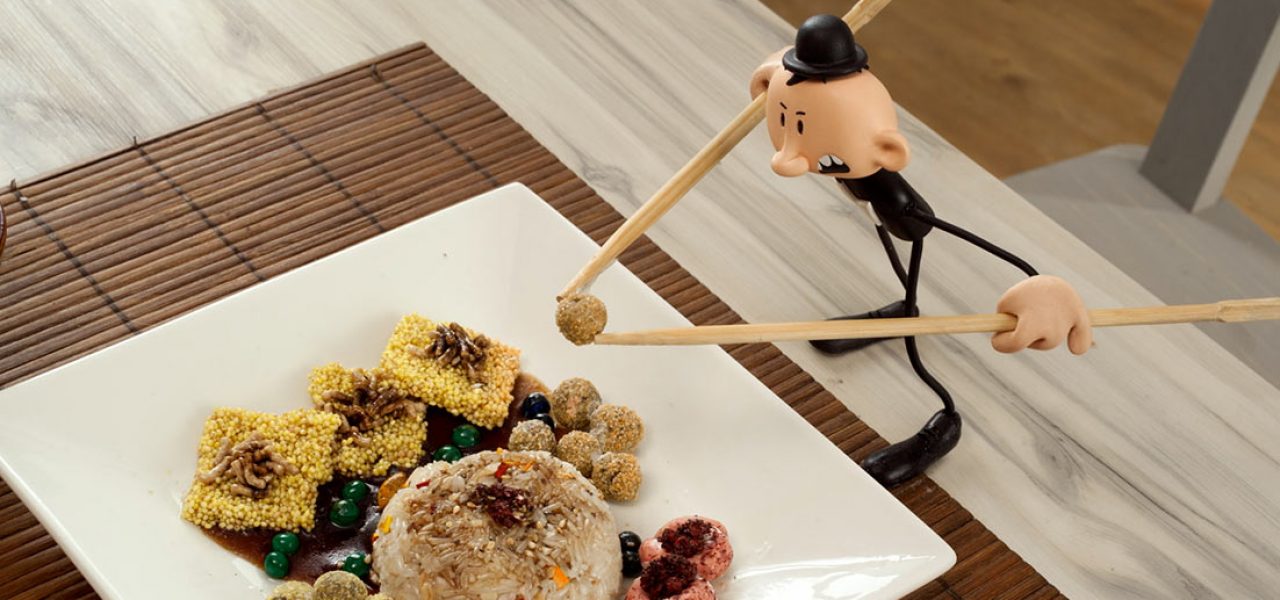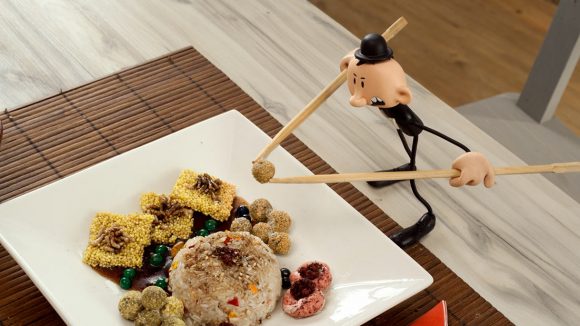

The Big Challenges of Making ‘The Tiniest Man in the World!’
The Argentine director Juan Pablo Zaramella makes a leap forward with his first TV series The Tiniest Man in the World!, exploring new methods of production in this hybrid of animation and live action.
Watch the series trailer below:
Zaramella’s short films rank among some of the most highly awarded in contemporary Latin American animation. With a tender sense of humor and deep reflection on human nature, Zaramella’s animation displays qualities rarely found in much of the frantic animation of today. The Tiniest Man in the World is Zaramella’s exploration of the possibilities of physical slapstick, blurring the artistic boundaries between pixilation and clay animation previously explored in such short films as Luminaris.
The original concept was developed in just two weeks, and ended up becoming the show’s first episode. Zaramella contacted his former collaborator on Luminaris, Can Can Club, to help as associate producer. This independent Argentine studio, founded by animators Becho Lo Bianco and Mariano Bergara, has produced notable works such as Javier Mrad’s short films Teclópolis and 2 Meters. The partnership still wasn’t enough to generate the funding needed to start production; eventually, Films de L’Arlequin and France Television stepped in with a sound financial proposal. This support was later reinforced with state funding from Region Bretagne, CNC, and the Argentine government.
With an aesthetic that deliberately echoes classics like The Pink Panther, the 53 one-minute episodes follow the adventures of a six-inch character interacting with real actors in a live environment. “The concept for the series used references from classic tv shows,” Zaramella told Cartoon Brew, “with simple, static compositions and the musical score providing tempo and identity to the series. This makes the rhythm of the show calmer and more deliberate than most of today’s animation shows. I am aware of the risks of the decision, but I chose to bet on something different. I always say that if all the houses are painted green, paint yours red to make it stand out.”

To focus on the comedy found in the differences in scale between the character and his environment, keeping the length of the episodes short became a crucial consideration. “Although the short episode length initially made it difficult to find funders, I chose to keep it that way because I truly believe that the heart of the series lies in its simplicity, ” said Zaramella. “Making the episodes longer would have forced me to deepen the character’s personality, but I was determined to focus instead on the gags.”
Most of the humor revolves around contrast: of scale, but also between the messiness of nature and the refinement of art. “I have been particularly interested in showing the difference between the animated world, where everything has a precise and controlled aesthetic, and reality, commanded by entropy and disorder. If the natural environments were cracked or dirty we left them as they were, except when this affected clarity in the story.” And the humor arising from these contrasts is brilliantly enhanced in the show thanks to a naturalistic, almost documentary, style of photography.

The biggest technical challenge in Tiniest Man was undoubtedly the interaction between environment and character, with the director of photography having to reproduce the light conditions of the real environment on set.
“The composition was a different challenge in every episode,” said Zaramella.
In some cases, live recording took place with just the body of the character on location, with the missing head animated later in the studio. We reconstructed the environment in the studio according to the needs of the shot. Sometimes only the floor would be in contact with the character so that was all we needed, but if the story took place indoors, then we reconstructed the whole set. As a result the budgets fluctuated dramatically with each episode, some coming in at twice the expected cost, others just half. Little Tammer was the most expensive episode, due to the use of a specially trained rat which confronts the character.

Another interesting aspect of the production was the cooperation between teams in Rennes, France, and Buenos Aires, Argentina. Production started at JPL Films in Rennes at the beginning of 2016, a studio with a reputation in the field of hybrid animation. Zaramella committed himself to supervising puppet construction, animatics, and the beginning of the shooting process. Once the French animators understood the character, the team was ready to start shooting the first twenty episodes. Back in Can Can Club studio in Argentina, Zaramella still coordinated work in the French studio thanks to daily Skype meetings and shot approval via Whatsapp.
The potential for this kind of collaboration between international producers and the thriving animation scene in Latin America is undoubtedly enormous. For Luciana Roude of Can Can Club, their involvement in The Tiniest Man was doubly rewarding due to the links established with other foreign producers and distributors. “International collaboration will become key to completing more complex and expensive projects that probably wouldn’t be feasible in any other way,” explained Roude.
The Tiniest Man in the World is due to be aired on television on France 4 (France) and Paka Paka (Argentina) in January 2017, with French distributor Dandelooo negotiating sales to other countries. The episode A Christmas Present was released. Zaramella’s fans will be pleased to find a reference to his short film Lapsus in the gag involving two nuns at the end of the episode.


